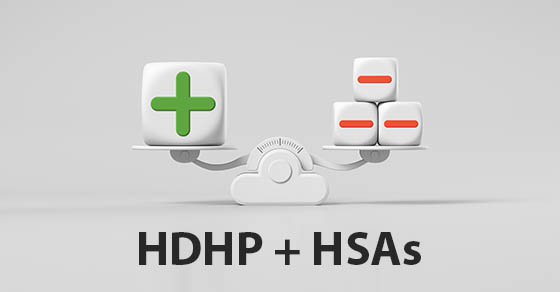Is your business on top of its tech stack?
- ByPolk & Associates
- Apr, 11, 2025
- All News & Information
- Comments Off on Is your business on top of its tech stack?
Your company’s “tech stack” is crucial, but it can be a major drain on cash flow. Simply defined, a tech stack is all the software and other digital tools a business uses to operate. Here are five factors to focus on: 1) Composition; conduct regular audits so you know what you have. 2) Integration/compatibility; choose solutions that play well together. 3) Price to value; beware of cheaper solutions because they may lead to inefficiencies and functionality gaps. 4) Scalability; look for flexible assets that you can scale up or down. 5) Adoptability; shop carefully and strive for employee buy-in. Contact us for help assessing the financial impact of every component of your tech stack.
Discover if you qualify for “head of household” tax filing status
- ByPolk & Associates
- Apr, 11, 2025
- All News & Information
- Comments Off on Discover if you qualify for “head of household” tax filing status
When preparing your tax return, we’ll check one of the following statuses: single, married filing jointly, married filing separately, head of household (HOH) or qualifying widow(er). Filing as HOH is more favorable than filing as single. To illustrate, the 2025 HOH standard deduction is $22,500, while it’s $15,000 for singles. To be eligible, you must maintain a household that, for more than half the year, is the principal home of a “qualifying child” or other relative of yours whom you can claim as a dependent. The IRS considers you to “maintain a household” if you live in the home for the tax year and pay over half the cost of running it. We can answer any questions about your situation.
Weighing the pluses and minuses of HDHPs + HSAs for businesses
- ByPolk & Associates
- Apr, 11, 2025
- All News & Information
- Comments Off on Weighing the pluses and minuses of HDHPs + HSAs for businesses
A popular benefits model for many businesses is sponsoring a high-deductible health plan (HDHP) accompanied by Health Savings Accounts (HSAs). HSAs are participant-owned, tax-advantaged accounts that accumulate funds for eligible medical expenses. To own an HSA, participants must be enrolled in an HDHP (as defined by the IRS), have no other insurance and not qualify for Medicare. For businesses, HDHPs generally have lower premiums than other insurance plans, and optional employer contributions are tax deductible. For participants, HSAs are powerful savings vehicles that they own for life. However, the HDHP + HSA model has potential drawbacks for both parties. Contact us for more info.
6 essential tips for small business payroll tax compliance
- ByPolk & Associates
- Apr, 11, 2025
- All News & Information
- Comments Off on 6 essential tips for small business payroll tax compliance
Staying compliant with payroll tax laws is crucial for small businesses. Mistakes can lead to fines, strained employee relationships and legal consequences. Here are four quick tips: 1) Maintain organized records so you can verify to the IRS that you’re withholding and remitting the correct amounts. 2) Understand withholding and adhere to filing and deposit deadlines. A “responsible person” who willfully fails to withhold or deposit employment taxes can be held personally liable for a steep penalty. 3) Stay current with regulatory changes. 4) Seek professional advice. We can help you select the right system, calculate employee withholding, navigate multi-state filing requirements and more.
Deduct a loss from making a personal loan to a relative or friend
- ByPolk & Associates
- Apr, 11, 2025
- All News & Information
- Comments Off on Deduct a loss from making a personal loan to a relative or friend
Suppose your adult child or friend needs to borrow money. You may want to help by making a personal loan. But there are tax implications that you should understand. You want to be able to prove that you intended for the transaction to be a loan rather than an outright gift. That way, if the loan goes bad, you can claim a non-business bad debt deduction for the year the loan becomes worthless. You should have a written promissory note. It’s best to charge an interest rate that equals or exceeds the applicable federal rates set by the IRS. They potentially change each month. For April 2025, they range from 4.09% to 4.52%, depending on the loan length. Contact us if you have questions.
Business owners should get comfortable with their financial statements
- ByPolk & Associates
- Apr, 11, 2025
- All News & Information
- Comments Off on Business owners should get comfortable with their financial statements
Business owners: Each of the three parts of your financial statements is a valuable tool that can guide you toward good operational decisions. For example, the balance sheet’s primary purpose is to tally your assets, liabilities and net worth, creating a snapshot of your company’s financial health during the statement period. Meanwhile, the income statement’s purpose is to show sales, expenses, and income or profits earned after expenses over the period. It can help you assess profitability. Finally, the statement of cash flows aims to track all sources (inflows) and recipients (outflows) of your cash. It can allow you to optimally manage liquidity. Contact us for more information.
Turning stock downturns into tax advantages
- ByPolk & Associates
- Apr, 11, 2025
- All News & Information
- Comments Off on Turning stock downturns into tax advantages
Have you ever bought stock shares that later became worthless? (This may become relevant in light of recent market volatility.) At least you can claim a tax deduction. You can claim a capital loss equal to your basis in the stock (generally what you paid for it). The stock is treated as if it was sold on the last day of the tax year. This date affects whether the loss is short- or long-term. You may discover that a stock is worthless after you’ve filed your return for the year. In that case, you can amend your return for that year to claim a credit or refund. This can be done for 7 years from the due date of your original return, or 2 years from the date you paid the tax, whichever is later.
Planning for the future: 5 business succession options and their tax implications
- ByPolk & Associates
- Apr, 11, 2025
- All News & Information
- Comments Off on Planning for the future: 5 business succession options and their tax implications
When it’s time to consider your business’s future, succession planning can protect your legacy and successfully set up the next generation of leaders or owners. Here are five options to consider: 1) Transfer the business directly to family members through a sale or gifts. 2) Transfer ownership through a trust. 3) Engage in an employee or management buyout. 4) Establish an employee stock ownership plan. 5) Sell stock or assets to an outside buyer. Each of these options has tax implications. The best approach for you depends on factors including your retirement timeline, financial goals and family or employee involvement. Contact us about how to move forward in your situation.
How to evaluate and undertake a business transformation
- ByPolk & Associates
- Mar, 12, 2025
- All News & Information
- Comments Off on How to evaluate and undertake a business transformation
A business transformation is a strategically planned modification of how all or part of a company operates. Some businesses might change their mission; others may undergo a digital, operational or structural transformation. The overarching goal of any transformation is to improve the company’s financial performance by increasing efficiencies, improving customer service, seizing greater market share or entering a new market. Deciding whether to undertake a transformation calls for due diligence through analysis of financial data and market trends, customer feedback, and input from professional advisors. If you opt to proceed, you must follow a careful, phased approach. Contact us for help.
Riding the tax break train: Maximizing employee transportation fringe benefits
- ByPolk & Associates
- Mar, 12, 2025
- All News & Information
- Comments Off on Riding the tax break train: Maximizing employee transportation fringe benefits
If your employer offers tax-favored transportation fringe benefits, you should probably take advantage of them. For 2025, employer-provided mass transit passes for train, subway and bus systems are tax-free to an employee, up to $325 a month. Your company can’t deduct the cost of this benefit. However, your company can offer a salary-reduction arrangement that allows you to set aside up to $325 per month from your salary to pay for transit passes. That way, you pay with before-tax dollars. For 2025, employer-provided parking allowances are also tax-free up to $325 per month. You can be given this fringe on top of the tax-free $325 a month for transit passes. Contact us with questions.










